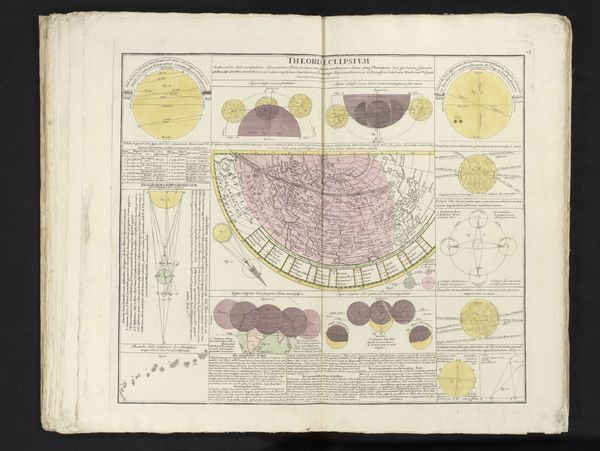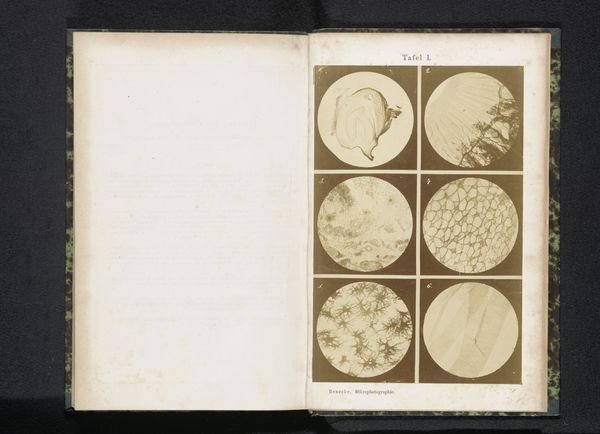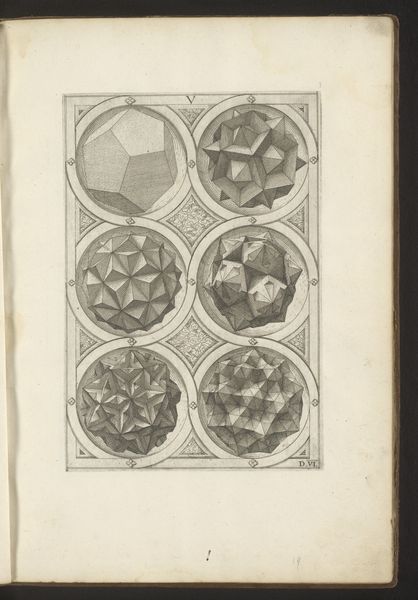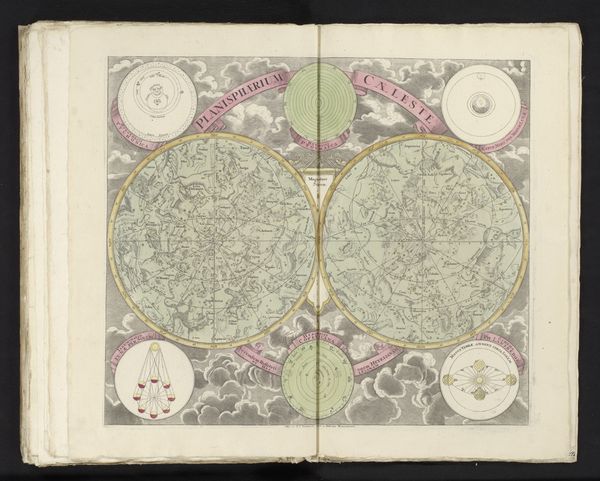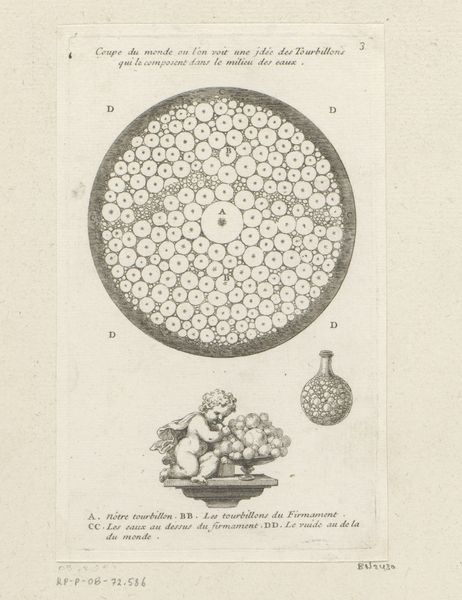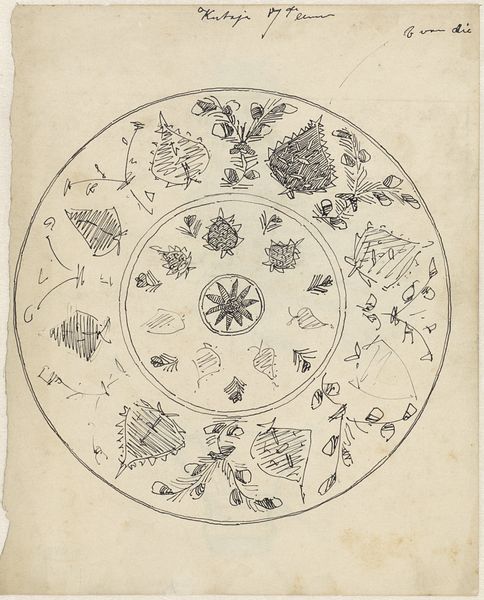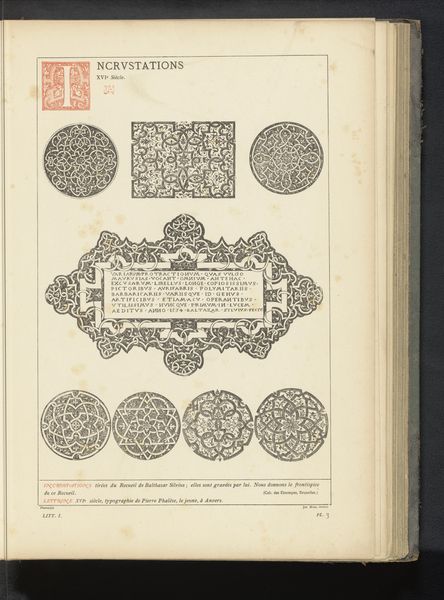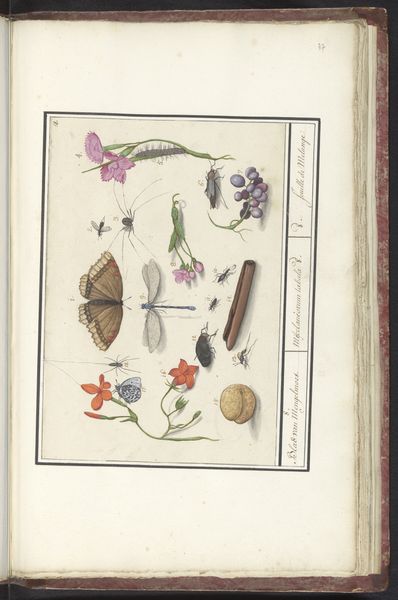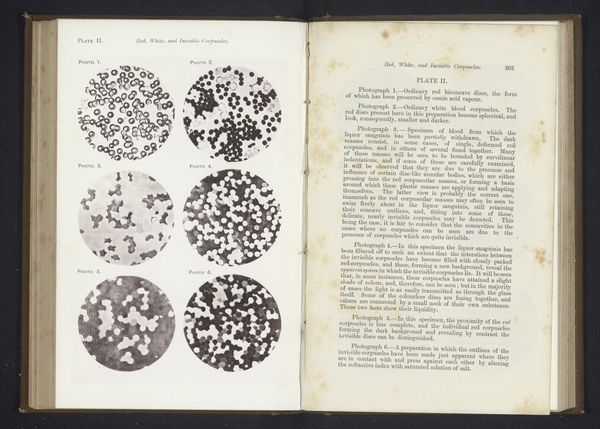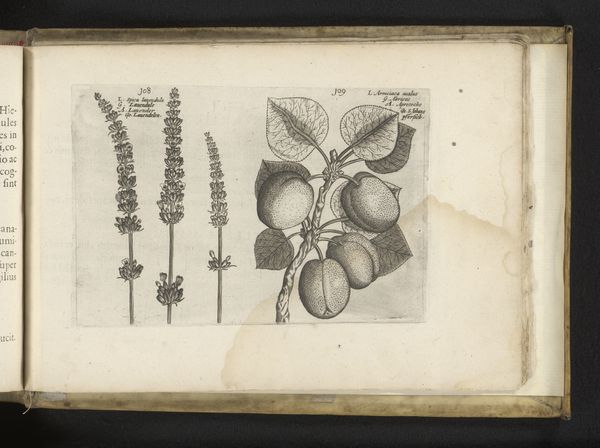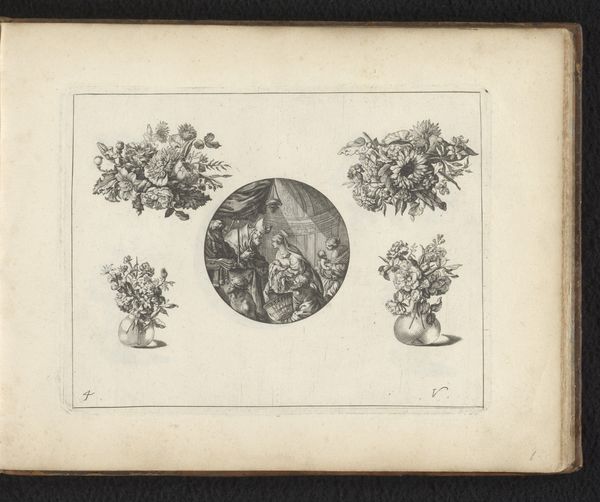
drawing, print, paper, ink, engraving
#
drawing
#
aged paper
#
book binding
#
homemade paper
#
paper non-digital material
#
baroque
# print
#
sketch book
#
landscape
#
paper
#
11_renaissance
#
personal sketchbook
#
ink
#
geometric
#
pen and pencil
#
sketchbook drawing
#
history-painting
#
storyboard and sketchbook work
#
academic-art
#
sketchbook art
#
engraving
Dimensions: height 518 mm, width 585 mm
Copyright: Rijks Museum: Open Domain
Curator: Looking at this sheet, “Diagrammen met theorieën en uitleg over de maan” or "Diagrams with Theories and Explanations of the Moon," created anonymously in 1742, currently held in the Rijksmuseum, I am struck by the blend of scientific inquiry and artistic presentation. It’s really quite captivating. Editor: I agree. My first thought goes to the sheer beauty of it. All of the circles and radiating lines almost have a mystical quality, despite being scientific diagrams. It evokes a sense of wonder about our place in the cosmos. Curator: Precisely. The symbolism here is profound. The moon, throughout history, has represented cycles, change, and the feminine principle. Mapping its phases connects to humanity’s attempts to understand these broader cosmic rhythms and its effect on the earth and humanity. Each little diagram reads like a complete symbol, packed with intention. Editor: Yes, and placed into a cultural context, it represents this moment in history when the Enlightenment’s thirst for rational explanation converged with an almost baroque fascination for natural mysteries. Was this made for academic study, or for popular consumption, or maybe both? Curator: Probably, this was accessible to a wide audience who, due to their interest in natural history, were more open to this kind of visual exposition. It's an engraving, and thus designed for relatively wide dissemination, allowing the public consumption of scientific diagrams which adds to their cultural power. It offered people insight and encouraged thinking beyond what's on earth. Editor: This piece really highlights how knowledge has always been mediated through visual means, which dictates how widely or narrowly certain information is circulated, and to what social ends. That a sketch about science can possess beauty makes one contemplate art's social importance even more. Curator: Absolutely. Examining the diagram illuminates the cultural mindset of the 18th century. The fascination with celestial order shows not only scientific but philosophical, perhaps even religious dimensions. Editor: It invites us to consider how we represent knowledge, what visuals we use, and how our perception of the universe shapes culture and imagination. Curator: And reveals that these celestial questions have resonated with humanity across ages. A beautiful reminder, I must say.
Comments
No comments
Be the first to comment and join the conversation on the ultimate creative platform.
